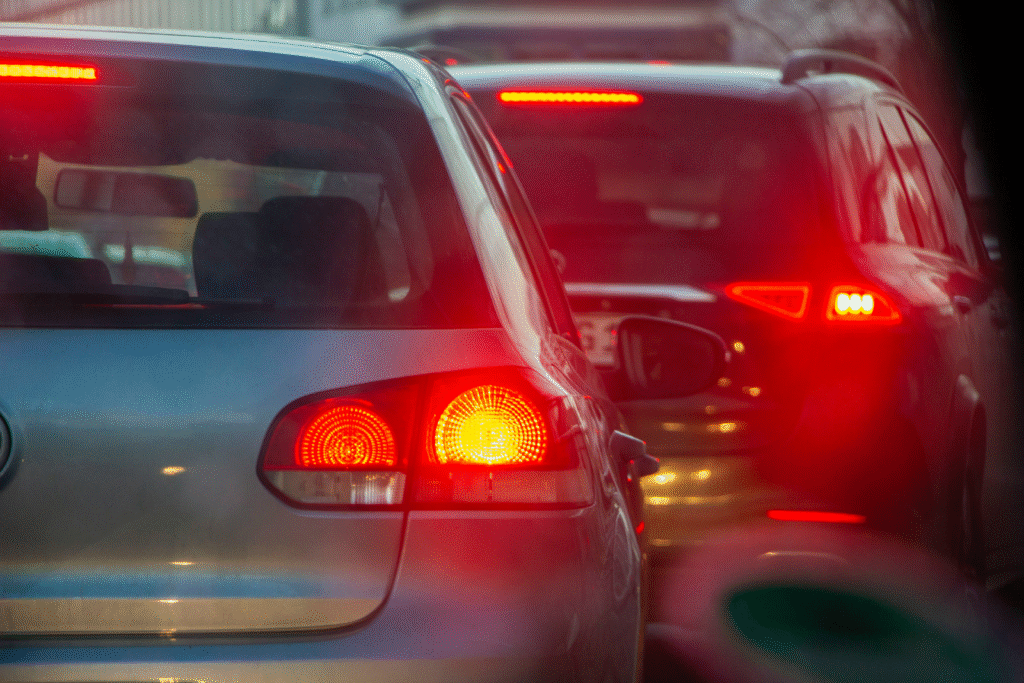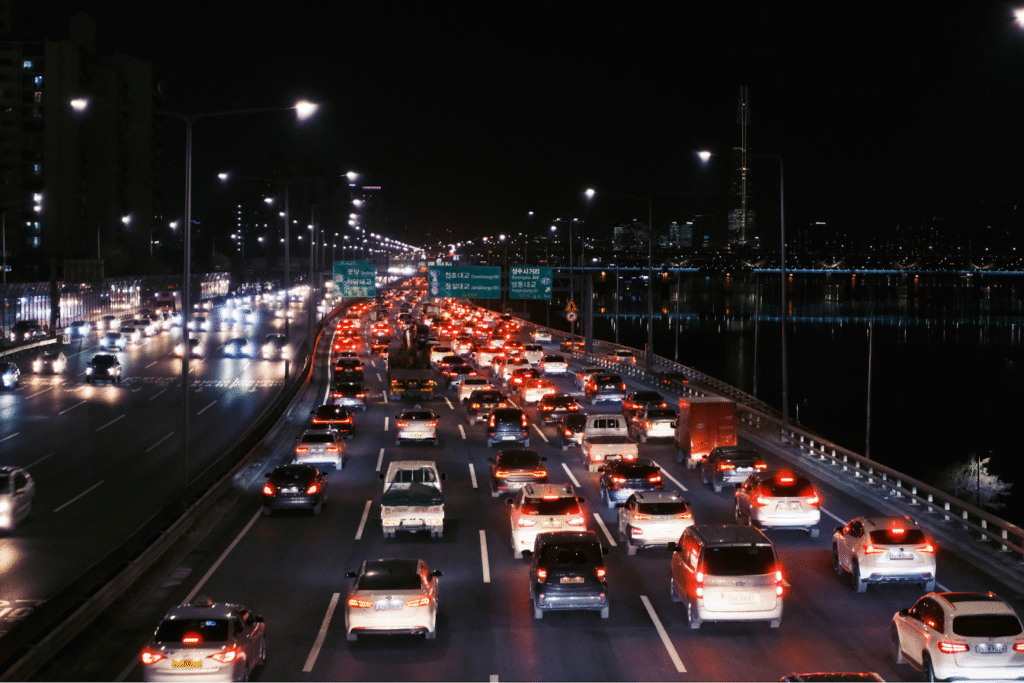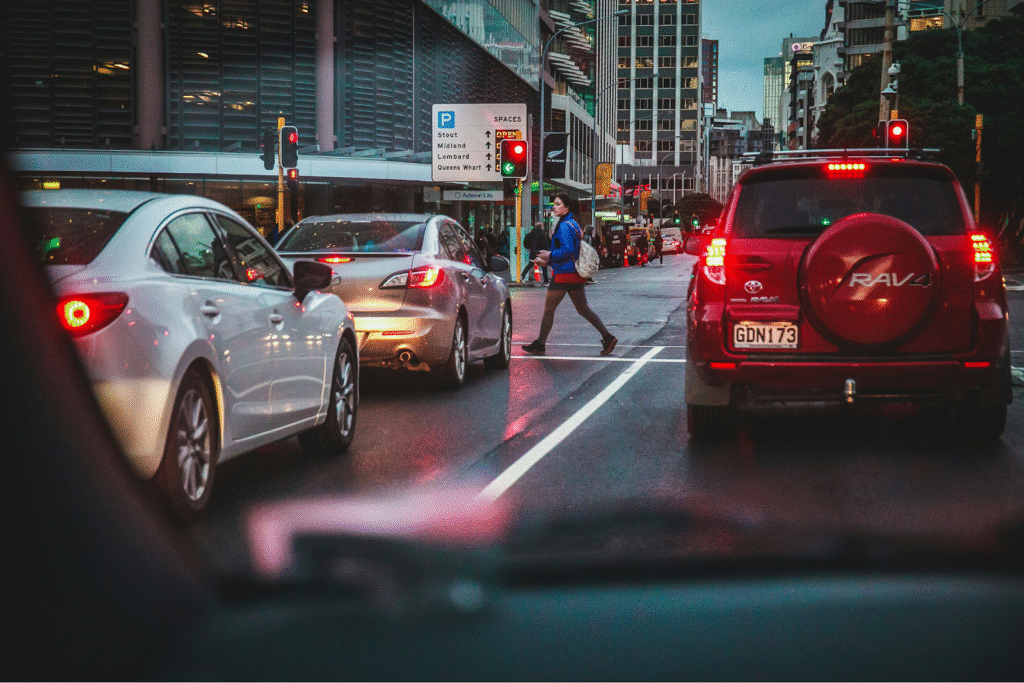Optimizing intersections starts with understanding the data behind them. Traffic signal performance measures are the key metrics cities use to evaluate signal efficiency, congestion, and safety in real time. By tracking these indicators, engineers can pinpoint issues, improve timing, and enhance mobility across their networks, with actionable insights powered by connected technology.

Why Traffic Signal Performance Matters
Cities around the world are benefiting from traffic signal performance measures. How? With the data they collect, city engineers have more insight into how to optimize traffic flow, safety, and city efficiency.
Traffic signal performance measures (SPMs) are a standardized method to quantify the effectiveness of an intersection. Using innovative technology, these measures consider congestion, accident reports, travel time, queues, corridor efficiency, and other factors to provide traffic-improving suggestions.
It’s important to watch traffic signals, especially in growing cities. This helps keep drivers, cyclists, and pedestrians safe. It also enables emergency responders to reach their destinations more quickly. Let’s take a look at the key metrics that matter most when optimizing traffic flow.

What Are Traffic Signal Performance Measures?
Traffic signal performance measures are data-driven metrics used to evaluate and optimize intersection operations. By gaining a deeper understanding of the current state of an intersection, city decision-makers can identify areas for improvement, enhancing efficiency, savings, and safety.
Signal performance measures replace manual timing studies with real-time data. Using Miocision Scout Plus®, intersections are monitored using a camera that sends real-time data to the software for analysis. This software will consolidate the data, and provide suggestions, areas for improvement, and graphs.
Signal performance considers multimodal count data, including cars, trucks, pedestrians, and bikes. It generates reports and visualizations to inform a planning policy. It also reviews results instantly through onboard video processing, ensuring all results are timely and relevant.
6 Core Metrics That Matter Most in Traffic Signal Systems
The following metrics help us gain a deeper understanding of travel time, intersection delays, queue lengths, traffic volume, and other related factors. A better understanding of these things leads to less congestion, safer roads, and more efficient commutes.
Miovision ensures these metrics are accessible through connected infrastructure. City officials can use a dedicated platform to understand the collected data. Additionally, Miovision software is compatible with most legacy and modern traffic solutions, facilitating easy integration.

1. Split Failures
Traffic solutions measure when vehicles can’t clear an intersection during a green light because there’s too much congestion ahead of them. This blocks other lanes from traveling, and can prevent emergency vehicles from responding to their call. Pinpointing this issue unveils inefficient signal timing.
2. Approach Delay and Travel Time
Measuring drivers’ approach to the intersection and travel time is key to identifying congestion points. The driver experience outlines intersection inefficiencies.
3. Volume-to-Capacity Ratio (v/c)
This has to do with how many vehicles must travel through an intersection (volume) and what the intersection is designed to handle (capacity). Intersections should meet the city’s demand. Analyzing signal optimization data helps prioritize retiming or infrastructure improvements.
4. Pedestrian Performance
Continuous counts of multimodal traffic, i.e. pedestrians, analyze wait times, crossing compliance, and safety. This metric focuses on how pedestrians use the intersection and whether their use of it could be made safer in an effort to achieve Vision Zero.
5. Detector Health and Data Quality
Miovision hardware monitors its own sensor functionality and ensures data reliability. This is critical for ongoing optimization accuracy as the owner is quickly alerted to any issues and can take action immediately.
6. Coordination and Progression Quality (Platoon Ratio)
This signal performance metric measures signal coordination along a corridor to ensure smooth driving, consistent traffic flow, and predictable travel times.
How Cities Use SPMs to Optimize Traffic Signals
Why are more and more cities installing Miovision software? Real-time performance data supports proactive signal adjustments. City officials can use the data and the provided optimizations to make improvements to congestion.
Analyzing signals and accidents within a city can highlight problematic areas. By evaluating safety and accident rates, smart traffic software can offer suggestions to promote accident reduction. This leads to a higher level of safety in existing infrastructure.
Overall, cities that implement automated traffic signal performance solutions see the following:
- Reduced congestion
- Lower emissions
- Reduced driver delay
- Faster emergency response times
- Fewer accidents

Common Challenges in Measuring Signal Performance
Without smart technology, cities can experience data silos or limited detection infrastructure. There’s often a lack of staff expertise or time for analysis, and integration issues with legacy hardware. This isn’t the case with Miovision’s benefits.
Miovision offers smart software that seamlessly integrates with most legacy hardware. This software gathers and consolidates data from video detection cameras, transforming it into actionable performance measures.
The Future of Traffic Signal Performance Analysis
Modern traffic systems are powered by automation and predictive analytics. With machine learning, they continually offer updated information and suggestions, using the data they gather to adapt to the city’s evolving needs. A key to this method is V2X, connecting vehicles. By connecting vehicles and the roads around them, our systems can better understand traffic conditions and how to improve them.
Machine learning means they’re constantly adjusting and improving. This ensures our solutions stay relevant and continue to offer you the best options.
Automated Traffic Signal Performance FAQs
What are traffic signal performance measures used for?
Traffic signal performance measures are used to evaluate, optimize, and improve intersection efficiency and safety using real-time data.
Which traffic signal metrics are most important for optimization?
The most important metrics for city optimization are split failures, delay, volume-to-capacity ratio, pedestrian performance, and coordination quality.
How can Miovision help measure traffic signal performance?
Miovision’s platform collects and visualizes live signal data to simplify optimization and reporting.
Can performance measures integrate with existing signal systems?
Yes. One of the many perks of Miovision’s SPM tool is that it works with most legacy and modern controllers, so a whole rescale isn’t necessary.
Let’s Move: Take Control of Traffic in Your City
Effective traffic management starts with measurable, real-time insight. This is available with Miovision products. Forward-thinking cities should adopt Miovision’s Signal Performance Measures for scalable optimization and increased road safety.
Connect vehicles with traffic networks for optimal road conditions. Start integrating V2X solutions today.


